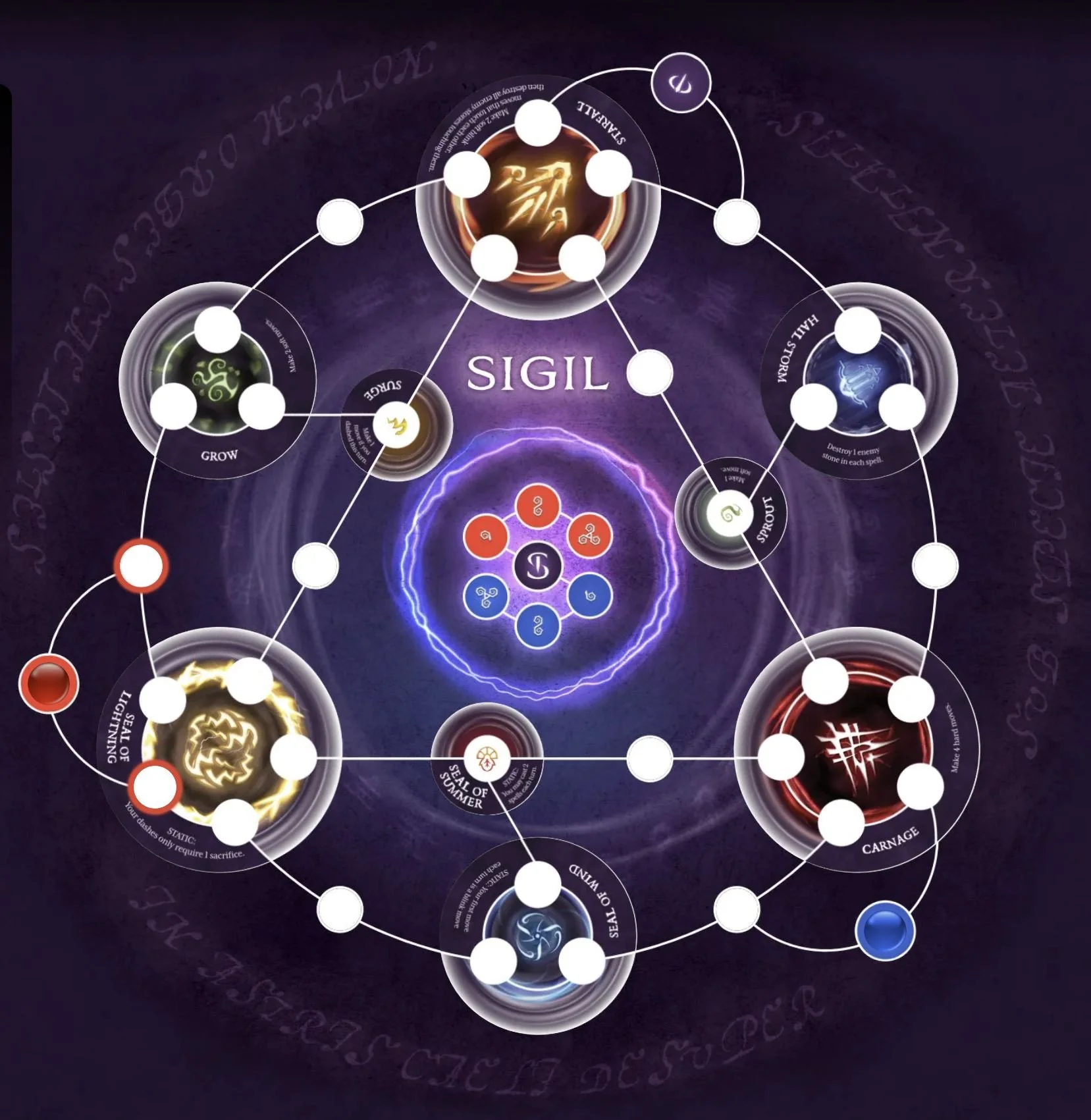Making a Plan
The goal of Sigil is to gain a 3-stone advantage over your opponent. While the strategy and tactics can be complex, this is achieved through a small number of avenues.
Surround & crush opposing pieces
Gain an incremental advantage through situationally strong spells
Gain a mana advantage and cast multiple spells
Your path to victory will often include multiple lines of attack. You might fight over a mana while filling a powerful Fireblast (see last week’s article on delayed casting). Or you might race into your opponent’s territory in an attempt to envelop their starting position.
Your overall strategy will however be informed by the texture of the board. What spells you and your opponent have access to, and how your opponent’s plan is developing.
Today I want to talk about how to form a plan, and how board texture and spells inform your plan.
Starting Positions
Your and your opponent’s starting positions can help inform your overall plan. Each spell has strengths & weaknesses. Let’s take a look at the board below.
Blue’s starting position favors a sprint towards the neutral mana. Both Flourish & Grow can accelerate blue towards the neutral mana. Their plan could be to claim the neutral mana by accelerating across the board, and then cast spells back to back each time for a stone advantage.
Of course, even the best laid plans of wizards and warlocks often go awry.
Red will use their resources to try and thwart blue’s race to the neutral mana. Red’s starting position with Comet to set up a toe hold across the board, and Carnage to punish blue once in close contact is a good start to countering blue’s push.
Understanding each spells’ strengths and weaknesses is a good place to start when formulating your plan.
Spells Archetypes
I like to think of Sigil’s spells as falling into a few archetypes.
Expansionary Spells
Containment Spells
Aggressive Spells
Expansionary spells allow you to expand across the board quickly, claiming new territory and reconfiguring your board position. They favor a strategy that races to claim the neutral mana, or can be combined with more aggressive spells to quickly pivot into a more aggressive plan.
Containment spells are excellent at punishing an opponent who is expanding too quickly. They allow you to drop stones across the board, blocking an advance, securing a toe hold in a three node spell, or even stealing a mana out from under them.
Aggressive spells favor a game plan that gets your stones up close and personal with your opponent’s pieces. They often take a bit more set up than other spell types, but can lead to the most devastating turns in the game.
Carnage and Fireblast incentivize you to push your stones among your opponent’s pieces before unleashing one devastating turn. Whereas Seal of Lightning offers unsurpassed mobility, and can be utilized to send a small strike force of stones into your opponent’s territory, disrupting their spell casting and surrounding and crushing errant stones.
Of course, not every spell fits cleanly into these categories. Spells like Seal of Wind and Comet offer mobility across the board but at a cost in tempo or stones.
Be Flexible
As a game evolves your plans will need to evolve and change with it. Maybe your opponent countered your primary plan, or forced you to fire off a spell prematurely. You’ll need to evaluate whether a spell is worth fighting over, and where your stones are being pushed (see Andy’s article on Backfilling).
Let’s take a look at a couple of scenarios. In the comments or the Discord, let me know what your overall plan is in each position.
Scenario 1: You are Red
Your starting spells are Seal of Lightning and Grow. Seal of Lightning encourages you to dash into close combat with your opponent. Grow encourages you to expand quickly towards the neutral mana.
Given your opponent’s starting location with Carnage, which spell do you fill first? What is your overall plan?
Scenario 2: You are Blue
On your last turn you cast Comet to claim the Neutral mana – putting you down a stone that you can recoup as soon as you cast a spell. Your plan was to use Bewitch to counter your opponent’s expansion. But, a fully filled Carnage threatens any stones Bewitch puts in close contact with their pieces.
What’s your plan? Do you cast Bewitch now, or wait for a more opportune moment?
Let us know your plans in the comments or the Discord.























